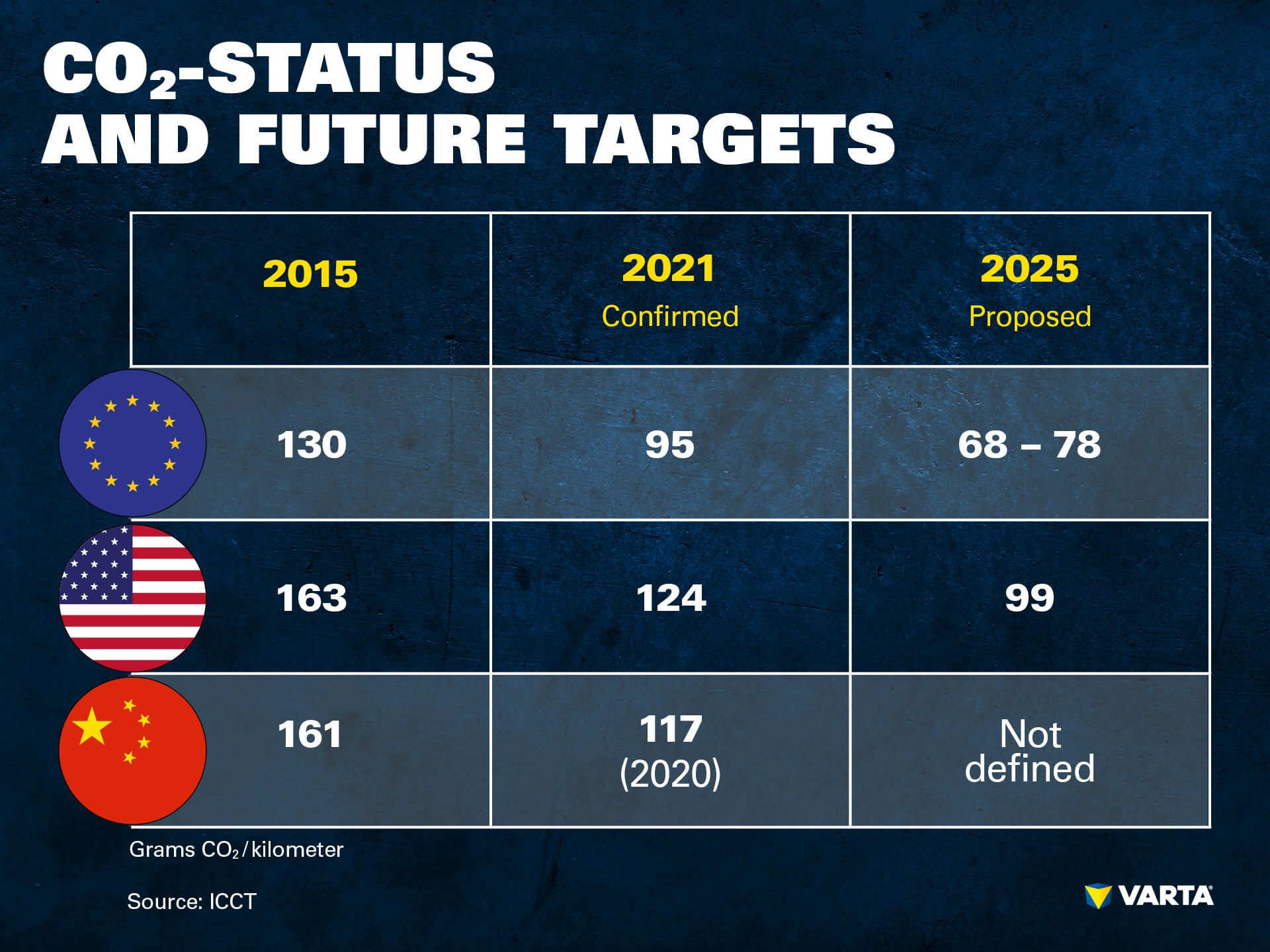Start-stop reduces emissions

Save fuel with start-stop to achieve EU climate targets
In 2007, the European Council presented a concept which is intended to sustainably reduce fuel consumption and reduce the associated emissions. The private car regulation which was adopted uses various measures to achieve the target value. These include environmentally compatible coolants for air conditioning systems, as well as equipment of vehicles with energy-saving LED lights. A further important technology for reduction of CO2 emissions is the use of automatic start-stop systems.
The first start-stop systems: All beginnings are difficult
As early as the beginning of the 1970s, Toyota was the first automotive manufacturer to present a start-stop system as a response to the oil crisis. The idea: Automatic start-stop systems save fuel and therefore money. This was a sensible idea in view of the price increases for gasoline and diesel fuel due to the oil crisis. VW and Audi were also quick to recognize the advantages of a start-stop system and presented a semi-automatic start-stop system at the beginning of the 1980s. However, due to lack of acceptance by customers, the first start-stop systems soon disappeared from the market.
It was only at the turn of the century, that leading automotive manufacturers turned to this technology again and developed it further. As well as the economic benefits which start-stop technology provides to drivers, this time it was the planned EU climate-related legislation which caused the revival of automatic start-stop systems.
Strict CO2 regulations: Automotive manufacturers use environmentally friendly technologies
The EU regulation for the reduction of CO2 emissions specifies that as of 2021, private cars may only emit 95 grammes of carbon dioxide per kilometer. From 2025, this limit will be reduced to between 69 to 78 grammes. For comparison: In 2015, car models emit an average of 130 grammes of carbon monoxide per kilometer.
For the coming years, the USA and China are also aiming to reduce CO2 emissions. While CO2 emissions in the USA in 2015 were 163 grammes of carbon dioxide per kilometer, in 2021, the value should only be 124 grammes. For 2025, a reduction of CO2 emissions to 99 grammes per kilometer is aimed for.
In 2015, climate-damaging carbon dioxide emissions by private cars in China were 161 grammes per kilometer. By 2020, the value should be only 117 grammes per kilometer.
As compact cars, sports cars and large sedans have different emissions, the limit value relates to the entire European vehicle fleet. The average weight of all the vehicles which an automotive manufacturer has in its range is used as the basis for calculation of the manufacturer-related limit value. Fines will be levied if the limit values are exceeded. Ecologically beneficial innovations with which a manufacturer contributes to reducing CO2 emissions have a positive effect on the limit value. These include solar cells on vehicle roofs, as well as systems for heat recovery from exhaust gases.

Less greenhouse gases with start-stop systems
Depending on the style of driving, start-stop technology can achieve fuel savings of up to 15%. However, the effectiveness of the system depends on many factors, including the area of use. During urban journeys, the automatic start-stop system causes the engine to switch off as soon as it is idling.
In addition to saving fuel, this enables CO2 emissions to be reduced by 3 – 8%.
Interesting facts about start-stop
Find a trusted workshop
Do you work with batteries?
Deepen your knowledge
-
Construction of VARTA Promotive EFB Truck BatteriesA patented mixing element ensures that acid stratification cannot occur in our ProMotive EFB battery. Read our article now to find out exactly how this works and what advantages it brings.
-
The importance of charge acceptance of truck batteriesBatteries with high starting current (CAA) and sufficient capacity (C20) guarantee reliable fleet operation. We tell you why.
-
Battery tips for the leisure seasonGet ready for your journey. Discover helpful tips and tricks for your leisure battery to get the best start to the season
Got a question?
-
Make use of our VARTA Battery Finder to find the battery product that fits your vehicle.
-
43,22% (ADAC Pannenstatistik 2022: https://www.adac.de/rund-ums-fahrzeug/unfall-schaden-panne/adac-pannenstatistik/) of all vehicle breakdowns are caused by battery issues - make sure to eliminate those.
Find a trusted VARTA® Partner near you and get your vehicle battery checked!
-
To extend your vehicle's battery life, consider these tips:
- Charge Care: Regularly monitor and charge the battery, especially during long-term parking or winter storage. Charge every two months if used sporadically.
- Check Charge: Regularly check battery charge, particularly in cold weather or after short trips. Dimming headlights indicate low charge.
- Prioritize Safety: Conserve battery by minimizing non-essential electrical use and keeping safety systems active during long drives.
- Clean Installation: Keep the battery and terminals clean to prevent discharge and enhance charging efficiency.
For more information find our article "Correct battery care"
